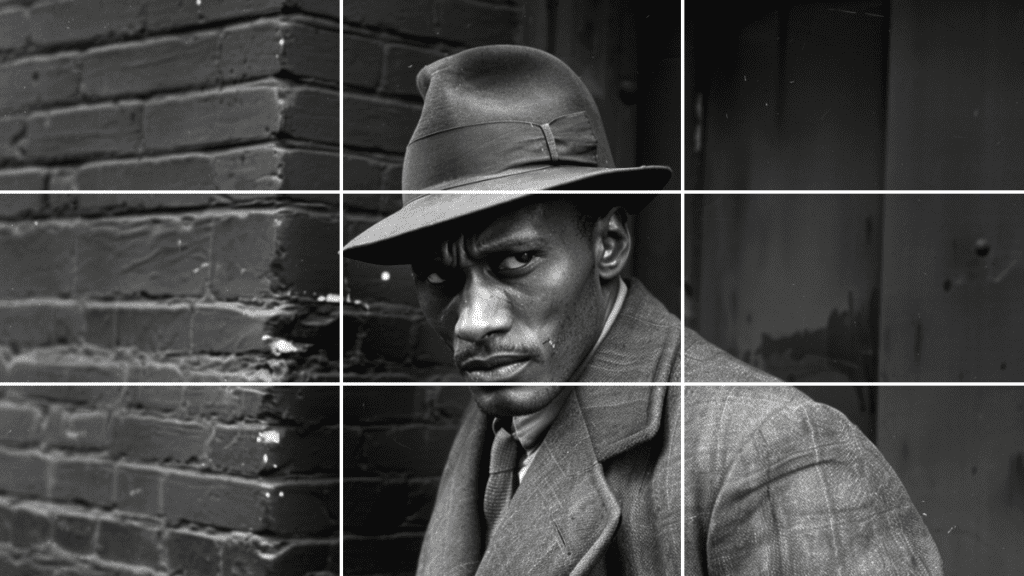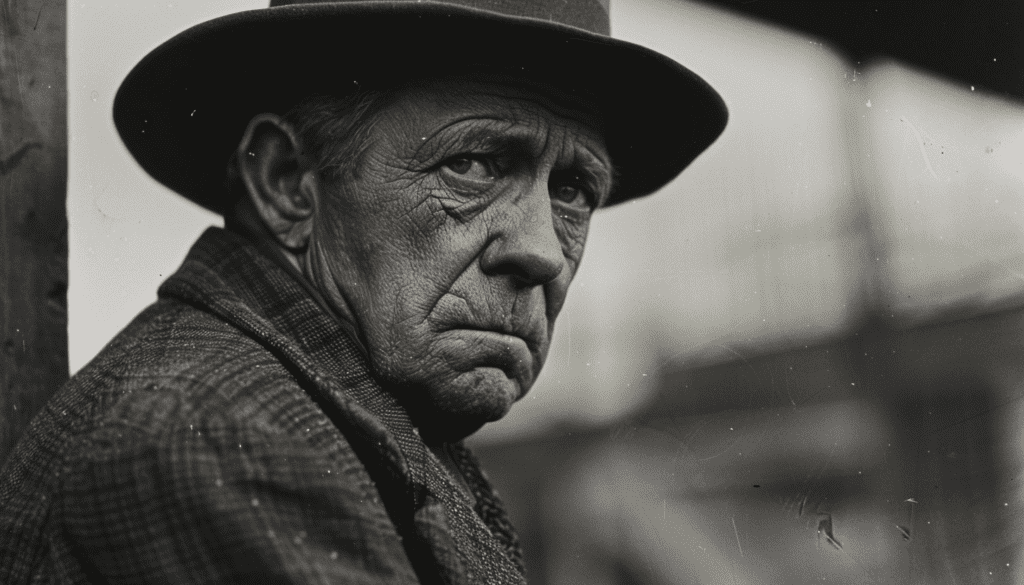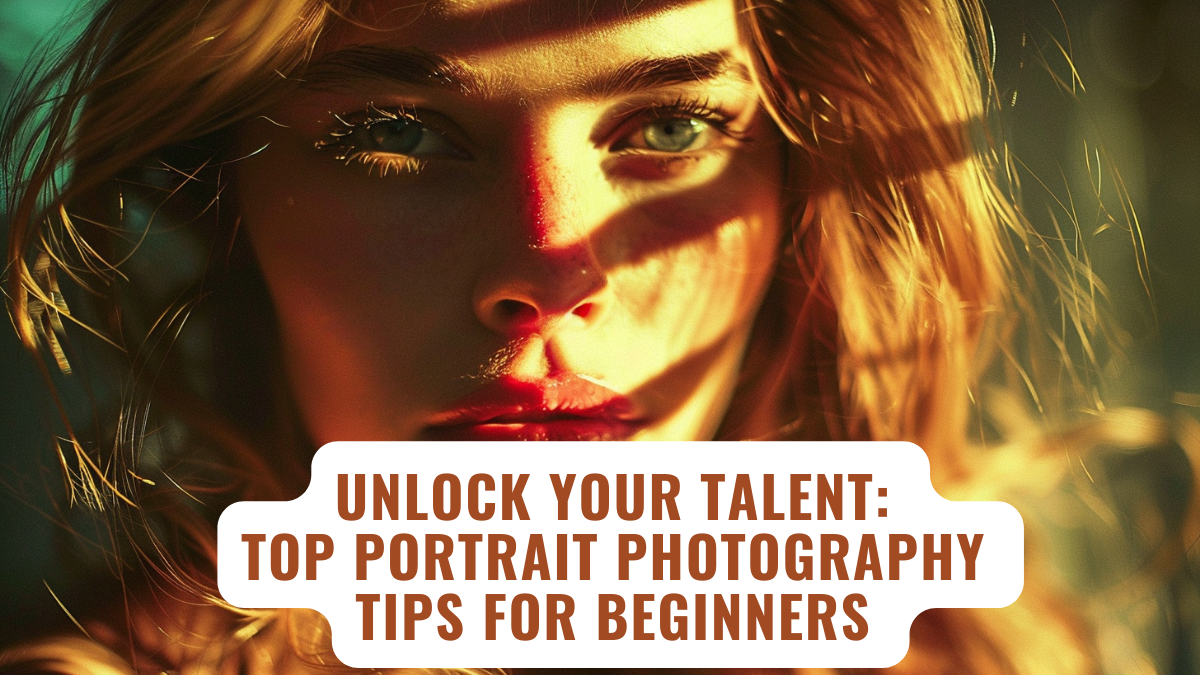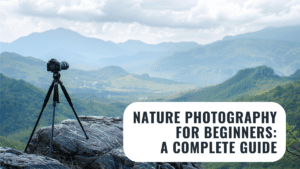Introduction
Diving into the world of portrait photography opens a door to a realm as exciting as it is enriching. Capturing the essence, emotions, and narratives of people through your lens is not just an artistic endeavor but a powerful way to communicate and document the human condition.
For those at the start of this journey, grasping the core principles of this art form is essential. This guide, laden with portrait photography tips for beginners, aims to illuminate your path from the initial curiosity to becoming a skilled portrait photographer. It’s designed to equip you with the knowledge and techniques needed to transform your vision into captivating images.
So, grab your camera, and join us as we delve into the world of portrait photography, where every frame is a story waiting to be told, and every subject is an opportunity to showcase your growing talent. Together, let’s unlock the secrets to creating stunning portraits that resonate with depth and emotion.
Understanding Your Equipment
Camera Basics: DSLR vs. Mirrorless
In the realm of portrait photography, the camera is your quintessential tool. Today’s market offers two predominant choices: the DSLR (Digital Single-Lens Reflex) and the mirrorless camera. DSLRs, with their optical viewfinders and extensive lens ecosystems, have long been cherished for their versatility and image quality. Mirrorless cameras, on the other hand, are lauded for their compactness, electronic viewfinders, and generally faster shooting speeds. As a beginner, the choice between DSLR and mirrorless might seem daunting. Yet, the truth lies in your personal preference and the type of portraits you aspire to capture.
When it comes to budget, DSLRs can be a cost-effective entry point, especially if you’re considering older models that still pack a punch in image quality and functionality. They offer a robust selection of lenses and accessories, which can be advantageous if you’re looking to expand your photography kit over time without breaking the bank. On the flip side, mirrorless cameras, while generally more expensive, boast the latest technological advancements, including superior video capabilities, live exposure previews, and a more compact design. This makes them a compelling choice for photographers who value cutting-edge features and portability.
In deciding between the two, consider not just the initial cost but also the type of photography you’re drawn to. If you anticipate shooting in various lighting conditions, or if you’re aiming for a setup that’s lighter and more travel-friendly, a mirrorless system might be more in line with your needs. Conversely, if you’re looking for durability, longer battery life, and a vast array of lenses at your disposal, a DSLR could be the better fit. Ultimately, your decision should align with your photographic goals, whether that’s capturing stunning portraits, experimenting with different styles, or simply finding joy in the art of photography.
Importance of Lens Choice
Equally important as your camera body is the lens you pair it with. A prime lens, such as a 50mm or 85mm, is widely recommended for portrait photography due to its ability to produce sharp images with beautiful background blur (bokeh), which helps your subject stand out. Lenses with wider apertures (lower f/numbers) allow for more light, which is essential in creating that soft, dreamy background effect and works wonders in low-light conditions.
Essential Gear for Beginners
Beyond the camera and lens, a few pieces of gear can elevate your portrait game. A sturdy tripod can help stabilize your shots, particularly in low light. Reflectors are invaluable for manipulating natural light and illuminating your subject’s features. And don’t overlook the power of a simple backdrop to eliminate distractions and focus attention on your subject. As you grow in your portrait photography journey, these tools will become extensions of your creative vision.
Essential Portrait Photography Tips for Beginners
Portrait photography is an art that combines technical skill with creative vision. As you embark on this journey, remember that each photograph you take is an opportunity to learn, grow, and refine your craft. This section is designed to introduce you to fundamental portrait photography tips for beginners. From mastering the light to directing your subject, these tips are the building blocks that will empower you to capture stunning portraits that convey emotion and tell a story.
Our goal is to provide you with a comprehensive guide that not only lays the groundwork for your technical development but also inspires you to explore the creative aspects of portrait photography. Whether you’re shooting with natural light or artificial, indoors or out, understanding these essential tips will set you on a path toward achieving captivating results in your portrait work.
Mastering the Lighting
Natural Light vs. Artificial Light
Lighting is the cornerstone of all photography, especially in portraits where the right lighting can dramatically enhance the mood and beauty of your subject. Natural light, provided by the sun, offers a soft and flattering glow that’s perfect for beginners due to its availability and ease of use. However, it’s also unpredictable and can vary in intensity and direction. Artificial light, on the other hand, includes sources like studio lights and flashes, offering control over intensity, direction, and color temperature, but requires a deeper understanding and significant investment in equipment.
The Golden Hour
One of the most coveted times for photographers is the “golden hour,” the period shortly after sunrise or before sunset when the sunlight is softer and warmer. This magical lighting condition adds a beautiful, ethereal glow to the skin and can elevate a simple portrait to a masterpiece. Experimenting with golden hour lighting can help you achieve stunning results with minimal effort.

Using Reflectors and Diffusers
Reflectors and diffusers are invaluable tools in manipulating light, especially when dealing with harsh shadows or uneven lighting conditions. Reflectors bounce light onto your subject, filling in shadows and balancing the exposure, while diffusers soften the light, creating a more flattering look. Both tools are essential for beginners and can significantly improve your portraits with a small investment.
Composition and Framing
Rule of Thirds
A foundational principle of photography, the rule of thirds involves dividing the frame into nine equal sections with two horizontal and two vertical lines. Placing your subject along these lines or at their intersections creates more tension, energy, and interest in the composition than simply centering the subject would.

Leading Lines and Depth
Utilize leading lines—natural or man-made lines within the scene—to draw the viewer’s eye towards your subject. This technique can add depth to your portraits and create a more dynamic composition. Additionally, playing with depth of field, by using a wide aperture to blur the background, helps your subject stand out and eliminates distracting elements.
The Importance of Background
While the subject is the focal point of a portrait, the background plays a crucial role in how the final image turns out. A cluttered or distracting background can take away from the subject, while a carefully chosen one can complement and enhance the overall portrait. Always pay attention to what’s behind your subject and, if possible, choose a background that adds to the story you’re trying to tell.
Focusing on the Eyes
The Window to the Soul
The eyes are often said to be the window to the soul, and this holds particularly true in portrait photography. Capturing sharp, expressive eyes can bring a portrait to life, conveying emotion and connecting the subject with the viewer. Focus on the eyes to ensure they are the sharpest part of the image, as they draw attention and add depth to your portrait.
Auto vs. Manual Focus
Modern cameras offer sophisticated autofocus systems that are generally reliable for ensuring sharp eyes. However, there may be situations, especially in low light or when shooting through obstacles (like grass or a fence), where manual focus can provide better control. Practicing both methods will prepare you for any scenario, allowing you to capture the perfect shot without missing a fleeting expression.
Techniques for Sharp Eyes
To guarantee the eyes are in focus, use a narrow aperture (f/2.8 to f/5.6) to ensure a shallow depth of field, drawing attention directly to your subject’s gaze. Additionally, if your camera allows, use eye autofocus mode, which is specifically designed to lock focus on the eyes, ensuring they are sharp even when your subject moves slightly.

Directing Your Subject
Communication Tips
Good communication is key to directing your subjects effectively. Be clear, positive, and encouraging. Give specific directions but also be open to spontaneous moments. Build a rapport with your subject to make them feel comfortable; this will lead to more natural and relaxed expressions, capturing the essence of their personality in your portraits.
Posing Basics
Start with simple poses and adjust as needed, considering your subject’s comfort and confidence. Encourage slight movements—like shifting weight or turning slightly—to find the most flattering angles. Remember, the best poses often come from minor adjustments to natural stances.
Capturing Genuine Expressions
Genuine expressions are the heart of compelling portraits. Engage your subject in conversation, use humor, and be patient. Capturing the moment when the subject relaxes, laughs, or becomes thoughtful can lead to powerful portraits that resonate with emotion.
Experimenting with Angles and Perspectives
High and Low Angles
Experimenting with different shooting angles can dramatically change the mood and impact of your portraits. Shooting from a higher angle can make the subject look more vulnerable or smaller, while a lower angle can convey strength and power. Try various angles to discover unique perspectives that enhance your subject’s features or the story you’re telling.
The Impact of Shooting Distance
The distance between you and your subject also affects the portrait’s feel. Close-up shots can capture intimate details and emotions, while shooting from further away can place the subject in a broader context or environment, adding layers to the story.
Creative Compositions
Don’t be afraid to break the rules and try unconventional compositions. Placing your subject off-center, using negative space creatively, or incorporating interesting foreground elements can add intrigue and depth to your portraits. The key is to keep experimenting and see what works best for the narrative you want to create.
Post-Processing Techniques
Basic Editing Steps
Post-processing is a critical step in turning a good portrait into a great one. Start with basic adjustments such as exposure, contrast, and white balance to ensure your image looks natural and true to life. Tools like cropping can also help improve composition after the fact, focusing attention more on the subject.
Enhancing Portraits with Software
Software like Adobe Lightroom and Photoshop offers a variety of tools to enhance your portraits. Subtle retouching, such as removing blemishes and smoothing skin, can be done while keeping the portrait looking realistic. Learning to use adjustment layers and masks can also help you apply effects selectively without overdoing it.
Keeping it Natural
The key to successful portrait editing is subtlety. Over-processed images can distract from the subject’s natural beauty and the story you’re trying to tell. Aim for enhancements that improve the image while maintaining the authenticity of the moment captured.
Building a Portfolio
Selecting Your Best Work
Your portfolio is your visual resume and should showcase your best work. Choose images that not only demonstrate your technical skills but also your ability to capture emotion and tell a story through your portraits.
Online Presentation
An online portfolio is crucial in today’s digital world. Platforms like Instagram, Flickr, and personal websites allow you to reach a wider audience. Ensure your online presence is professional, up-to-date, and reflective of your unique style and voice.
Getting Feedback
Feedback is invaluable for growth. Share your work with peers, join photography forums, or participate in online communities. Constructive criticism can provide fresh perspectives and help refine your skills.
Continual Learning and Inspiration
Following Professionals
Study the work of professional portrait photographers. Observing their techniques and the stories they tell through their images can inspire your own work and push you to try new approaches.
Attending Workshops
Workshops and classes are great opportunities to learn from experienced photographers. They can offer hands-on experience, personalized feedback, and insights into the creative process.
Experimentation and Creativity
The journey of learning portrait photography is ongoing. Experiment with new techniques, subjects, and concepts. The more you explore and push the boundaries of your creativity, the more your work will evolve.
Conclusion
Unlocking your talent in portrait photography is a journey of continuous learning and exploration. From mastering the basics of lighting and composition to experimenting with post-processing and developing a unique style, every step you take enriches your skill set and deepens your artistic expression. Remember, the most powerful portraits are those that capture the essence of their subjects, tell a compelling story, and evoke emotion in the viewer. So, keep practicing, stay curious, and let your passion for portrait photography illuminate the world through your lens.











